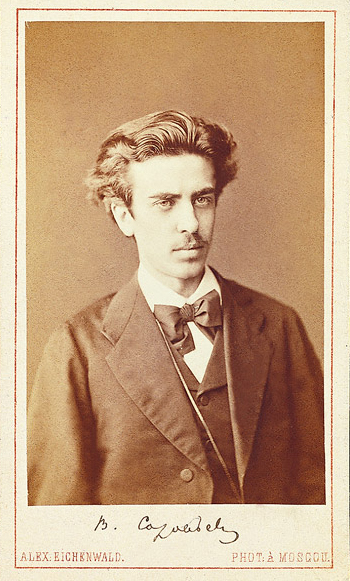Soloviev later describes Nietzsche’s doctrine of the superman as a “preliminary stage” of his own doctrine of the Godman. Vladimir Soloviev, “VI. Solov’ev Idjeja sverchceloveka,” in Krizis zapadnoj filosofii (The Crisis of Western Philosophy: Against the Positivists, 1874), reprinted in Sobranije sodinenij Vladimira Solov’eva, vol. 9 (Brussels: Foyer Oriental Chrétien, 1966).
In an unpublished treatise entitled Sophie, Soloviev writes: “Schelling is the true precursor of the new universal religion. Kabbala and Neoplatonism. Böhme and Swedenborg. Schelling and I.” As quoted in S. M. Solov’ev, Zizn’i tvorceskaja evolucija Vladimira Solov’eva (Brussels: Zhizn’ s Bogom, 1977), 121. For more on the relationship between Soloviev and Schelling, see also L. Müller, Solovjev und der Protestantismus (Freiburg: Herder Verlag, 1951), 93ff.
F. W. J. Schelling, Philosophy of Revelation (1841–42) and Related Texts, trans. Klaus Ottmann (Spring Publications, 2020), 199. In another passage on page 262, Schelling refers to Sophia directly.
V. Soloviev, Lectures on Godmanhood, trans. Peter Zouboff (Dennis Dobson, 1948), 154–55, translation modified.
Soloviev, Lectures on Godmanhood, 159.
Soloviev, Lectures on Godmanhood, 206, translation modified.
V. Soloviev, “Tri réci na pamjat’ Dostojevskogo,” in Sobranije sodinenij Vladimira Solov’eva, vol. 1 (Brussels: Foyer Oriental Chrétien, 1966), 218.
V. Soloviev, “Tri svidanija,” in Sobranije sodinenij Vladimira Solov’eva, vol. 12 (Brussels: Foyer Oriental Chrétien, 1966), 80.
“Sophie. Eat a little more today. I don’t want you to burn out. My darling, we want to prepare you for the great mission, which you must fulfill etc.” Quoted in S. M. Solov’ev, Zizn'i tvorceskaja evolucija Vladimira Solov’eva, 119.
For more on the relationship between Vladimir Soloviev and A. N. Schmidt, see S. Bulgakov, Tichije dumy (Paris: YMCA Press, 1976), 71ff.
Andrei Bely, Aleksandr Blok v vospominanijach sovremennikov, vol. 1 (Moscow: Khudozhestvennaia Literatura, 1980), 208–13.
Bely, Aleksandr Blok, 209.
Andrei Bely, Staryi Arbat (Moskovskii Rabochii, 1989), 45–200.
An overview of post-Solovievian Russian Sophiological thought can be found in V. V. Zen’kovsky, Istorija russkoj filosofii (Paris: YMCA Press, 1953), 2:379–457.
Pavel Florensky, The Pillar and Ground of the Truth: An Essay in Orthodox Theodicy in Twelve Letters, trans. Boris Jakim (Princeton University Press, 1997), 237.
Florensky, Pillar and Ground, 240, translation modified.
Florensky, Pillar and Ground, 252.
See G. Florovsky, Puti russkogo bogoslovija (Paris: YMCA Press, 1981).
V. V. Zen’kovsky, Istorija russkoj filosofii (Paris: YMCA Press, 1950), 455f.
For more on these parallels, see R. Grübel’s foreword to Mikhail Bakhtin’s Die Ästhetik des Wortes, ed. R. Grübel (Frankfurt am Main: Suhrkamp, 1979), 70f.
The relationship is also discussed in Boris Groys, “Elemente des Gnostizismus im Dialektischen Materialismus,” in Gnosis und Mystik in der Geschichte der Philosophie, ed. P. Koslowski (Zurich: Artemis Verlag, 1988), 352–67, forthcoming in English.
For more on this, see Boris Groys, “The Problem of Soviet Ideological Practice,” Studies in Soviet Thought, no. 33 (1987): 191–208.
Translated from the German by James Gussen.
